THE BUSY WRITER SERIES
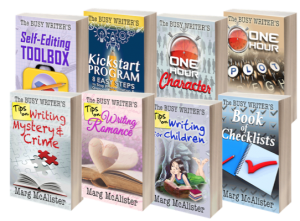
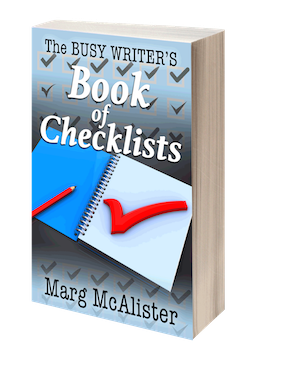
The Busy Writer’s Book of Checklists
The humble checklist can save a writer hours of time and frustration. Armed with a checklist to test your initial story idea, you can ensure that you have enough conflict and tension and challenges to keep readers turning the pages. (That’s much better than getting halfway through writing it only to find that your lovely bright shiny idea won’t hold up!)
With a plotting checklist at your elbow, you can run through the list of ‘essentials’ to apply to your novel – like character motivation and plausibility and crisis points, to name just a few of the things you have to consider.
Altogether there are 23 super-useful checklists – and as a special bonus, writers who buy this book are eligible for a full set of printable checklists that they can use again and again!
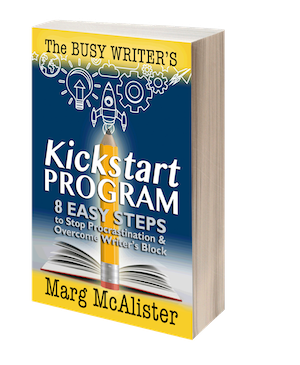
The Busy Writer’s Kickstart Program
The Busy Writer’s KickStart Program gives you an 8-Step Plan to get your writing on track again – or to set you up for success from the very start, if you’re a beginner. You will learn:
- How to clear your life from physical, mental and emotional clutter
- How to treat your writing like a project, so you stay on track
- How to set yourself up for success by changing the way you look at time
- Typical roadblocks for writers and how to get past them
- The importance of feedback, support and rewards
- Strategies for improving your technique
- Insights into plotting and characters
- How to keep yourself heading along the road to successYou can follow an 8-week plan, assigning one week to each step, or modify the KickStart Program to suit your way of life and your writing agenda.
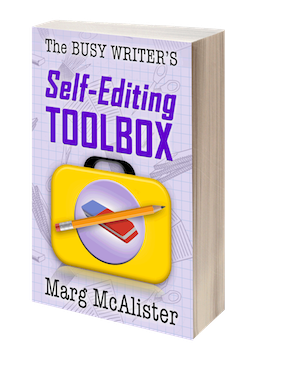
The Busy Writer’s Self-Editing Toolbox
Editing a manuscript involves far more than doing a spelling and grammar check and fixing up a sentence here and there that doesn’t flow. You need to know (a) the common mistakes that authors make (so you can avoid them or fix them) and (b) all the things that can affect a reader’s opinion of your book.
Sure, you can pay an editor or proofreader to go through your book – but that can get expensive and you miss the opportunity to improve the plot and develop your characters.
“The Self-Editing Toolbox really is every writer’s essential guide to editing their book to submission standard: easy to follow, yet effective. The color-coding makes it so easy to sort the rough spots from the prose that glows. I still have some polishing to do but my test readers say they can’t wait for more chapters as my characters ‘live off the page.’ I love they’re so hooked by a story that I was struggling to finish and feared I couldn’t develop to its full potential. I so nearly gave up on this WIP. With The Self-Editing Toolbox you really have taken the hard graft out of writing.” [Viv Adams, Romance Writer]
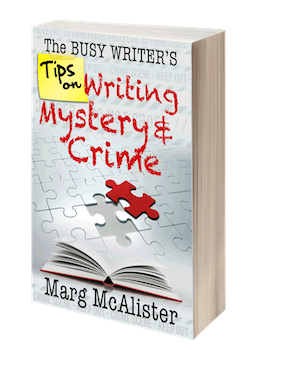
The Busy Writer’s Tips on Writing Mystery and Crime
A glance at any best-seller list will tell you how popular mystery, crime and thrillers are with readers. Most of you will find this perfectly understandable! There’s nothing like the thrill of the chase and the intellectual challenge of trying to guess ‘whodunit’ or ‘whydunit’ before the sleuth.
If you’re the writer, this presents you with a challenge. You have to juggle a lot of balls at once. You need to:
- come up with an intriguing mystery (or an edge-of-the-seat thriller) that will keep readers up long past bedtime
- keep your sleuth busy tracking down the perpetrator
- weave in and bring to life other significant characters
- leave a trail of not-too-obvious clues (trying to pull the wool over the reader’s eyes), and
- walk in the shoes of the villain, ensuring that he is a worthy opponent.
Oh, and did I mention that you have to write tight scenes, build the suspense, create believable conflict, and choose the correct viewpoint as well? Not to mention the research…
Good thing, then, that this is all covered in The Busy Writer’s Tips on Writing Mystery and Crime!
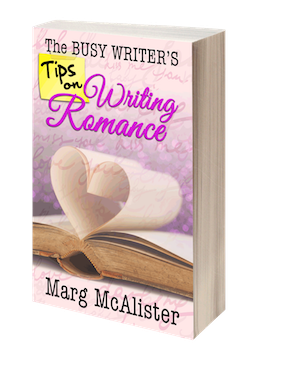
The Busy Writer’s Tips on Writing Romance
The Busy Writer’s Tips on Writing Romance equips you with the knowledge and tools you need to get started quickly in this popular genre, as well as pointing you in the direction of further help when you need it.
In this book, you will find:
- General tips on writing romance fiction
- Tips on creating vivid, believable heroes and heroines
- How to hook your reader
- Where to start your story
- Tips on creating emotional punch (all-important in any romance!)
- What ‘show, don’t tell’ really means
- Tips on conflict, pace and tension
- Tips on creating a romantic setting
- Tips on plotting a romance novel, with a Basic Plot Outline (“Add your own seasoning”!)
- An overview of romance sub-genres
- Sensuality versus sexuality
- How to build sexual tension
- Three handy checklists – Emotional Punch, First Chapter, Setting & SensualityThe Busy Writer’s Tips on Writing Romance will have you writing for this popular, evergreen genre within days!
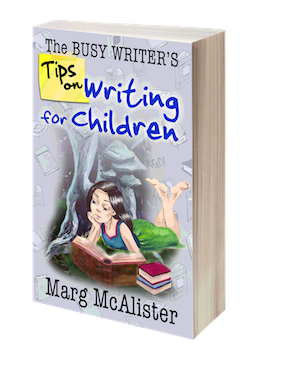
The Busy Writer’s Tips on Writing for Children
Writing for children is one of the most enjoyable and rewarding things you can do. If you put your heart and soul into it, and focus on writing a good book that will appeal your target readership, you have a good chance of establishing a satisfying career.
But first… you need to have a good understanding of the basics: how to create a fast-paced plot that will hold the attention of your young readers, or how to write a picture book that will have small children spellbound with joy.
You need to know how to create vivid, memorable characters, and how to write dialogue that sounds real and moves your story along so that your readers can’t wait to turn the page.
The Busy Writer’s Tips on Writing for Children gives you an overview of the different categories of children’s books, and shows you how to decide which one would be the ‘best fit’ for you.
The content includes:
- 10 Tips on Writing for Children
- An Overview of Children’s Book Categories
- Writing Picture Books (including “10 Common Mistakes in Plotting Picture Books”, and tips on how to think in pictures, fine-tuning your text and pictures, and writing in rhyme)
- Writing Stories for Children 6-12 (short books and chapter books for emergent readers; middle-range story books for 6-10 years and longer story books for 9-12 years)
- Writing for Young Adults (including 3 important tips on writing YA fiction and ideas about what to write for this market)
- Writing Non-Fiction for Children (including tips on finding non-fiction ideas and fine-tuning your ideas)
- Tips on Plotting (including the basics of a workable children’s book and a handy plot outline)
- Tips on Creating Characters (how to make your characters seem real; how to create a story from a character; where to find good story characters; a look at stereotyped characters and tips on how to introduce your characters)
- Tips on Writing Dialogue (what you should include; how to set out dialogue; setting conversational goals; speech tags and action tags and a dialogue troubleshooter, with tips on fixing dialogue that doesn’t sound right)The book also tells you how to access to bonus plot and character sheets that you can download to your computer, print out and fill in to create your own special story.”Tips on Writing for Children” is another winner in the ‘Busy Writer’ series!